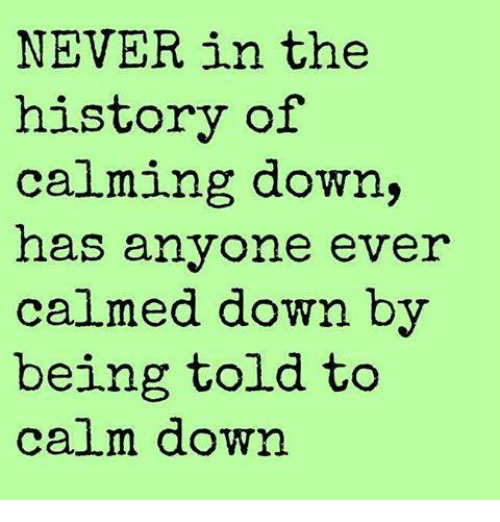How do grounding techniques work for anxiety?
- blairpsych
- Jun 8, 2023
- 5 min read
Simple grounding techniques for calming down
I really enjoy teaching my patients the tool of grounding when they discuss their anxiety. Some of the symptoms they mention are restlessness, worry, and racing thoughts. When our minds are racing or we are worrying, we can use the technique of grounding to bring us back to the present which allows us to cope with our overwhelming feelings or anxiety.
So what is grounding and is it different than mindfulness?
Mindfulness is defined as paying attention (on purpose) and without judgment to what is happening in the here and now, whereas grounding is defined as, being non-judgmental about what is happening in the here and now. When you are using grounding, you are guiding your attention away from thoughts about your past, threatening experiences, and guiding your mind towards present well-being. When we can bring our minds to the present moment, it helps alleviate our worry and not feel trapped by the thoughts that race through our mind. Grounding gives us the ability to focus on the present moment that we are in, rather than our minds shifting to future worrisome events or past situations that we wish could have been done/gone differently.
Why grounding works to calm the body down

Before I start discussing a variety of techniques. let’s explore the science behind grounding. When our minds start to race and we think of anything stressful, the amygdala, in the temporal lobe of our brains springs into action. The amygdala is responsible for our emotional responses, particularly fear. It is the part of the brain designed to sense possible danger. It sends off warning signals in the brain to get the body prepared, however in modern day society, often there isn’t a dangerous event actually happening even though a false signal occurred.
Let’s break it down less scientifically; you are at an event or in a situation and am irrational/negative thought comes into your mind. Your amygdala will sense that situation as “dangerous” and starts sending warning signals . Those signals will shout, “Danger! This is scary! Get out, escape!” and begins physiological changes in your body such as heavy breathing, increased muscle tension and pounding heart. Since your body is reacting to those signals it believes something is wrong, and will continue to keep your breathing up and your heart rate stimulated telling your brain to remain in distress. This cycle continues again and again, which makes you remain anxious and panicking, unable to stop your internal alarm bells from ringing.
This is where the use of grounding techniques can come in handy to break that continuous cycle and stop the signals from firing repetitively tricking your brain into believing something bad is about to happen. When a person mindfully chooses to switch their focus off of how they’re physically feeling, they can distract themselves from the anxiety provoking thoughts and physical feelings of fear.
There are a variety of grounding techniques you can use when feeling overwhelmed. Below I will discuss my three preferred techniques that I have demonstrated and taught a variety of my patients, from adolescents to adults.
1. The 5-4-3-2-1 Grounding Technique – But, I like to call it “the 5 senses”
This is my personal favorite grounding technique. It helps bring you out of an anxious state and can calm you down fast. By using all five of your senses at different times, you can teach yourself how to get back into the here-and-now. First, find a chair and sit comfortably with your feet grounded on the floor. You can take a couple deep and slow breaths to start calming your body and mind down. When you have finished your breaths start with your sense of sight and so on.
See below as I walk you through how I would demonstrate this in a session.
Name aloud:
5 – things you can see (you can look within the room and out of the window)
4 – things you can feel (the silkiness of your shirt, the texture of the material on the chair, what is in front of you that you can touch? A book or a pillow possibly?)
3 – things you can hear (people chattering outside the office, a nearby phone ringing, what else can you think of?)
2 – things you can smell (is there a candle burning or a air freshener?)
1 – thing you can taste (did you just have some gum or a mint?).
You’re done! Take a deep breath and ask yourself how do I feel now?
2. Distract yourself and your mind
There are numerous ways to distract the mind so that whatever is worrying you, you can bring your focus on something that doesn’t come from an emotional reaction. Here are a few distractions that are quick to do!
Pick a color or a shape to find in the room you are in. How many objects in different shades of that color or the shape can you spot around the room or out of the window? Still feeling stressed? Pick another color and/or shape.

Try you skills at math! Remember the multiplication tables we all learned in school? Start with 2’s and work your way up or down. Then try counting backwards by 8 starting at 200. It isn’t that easy and you have to concentrate so you don’t lose what number you were on.
Grab a notebook or some loose paper and write it out. Writing can be another great tool for distraction. Through writing your thoughts down in a journal, you may find that your emotional self is able to refocus and regulate emotions.
3. Get moving!!
There have been times that my patients have shared that the calming techniques aren’t helping them because they feel they have too much wound up energy to try and calm down to concentrate on there breathing or distracting themselves. If
this has ever happened to you, that’s okay, we can use that energy in a positive way. You can encourage the calming down process by doing something physically active first to get that suppressed energy out first and then revisit your favorite grounding techniques. Here are some ideas, but feel free to think of more of your own!
-Run on the treadmill if you have one at home
-Run up and down the stairs
-Take a brisk walk or run outside
-Organize the junk drawer in your kitchen or that spare closet that you’ve been putting off
-Dance around your home while listening to your favorite music
-What other activities can you think of?
When you are physically tired, you can come back to trying the grounding techniques you enjoy that quiet your mind.
Did you see a grounding technique that you liked best? Whatever one you choose, once your mind stops racing and you have given yourself time to calm down, you can then look at a situation more logically and face the thoughts that made you feel anxious in the first place.
To learn more about grounding techniques and how they can help you manage your anxiety visit us at www.MorMindful.com or give us call at: 561-460-1885 to schedule an appointment.
Laine E. Davis, PsyD
Postdoctoral Psychology Resident
Blair H. Mor, Psy.D.
Supervising Licensed Psychologist
Owner at MorMindful Therapy & Psychiatry
